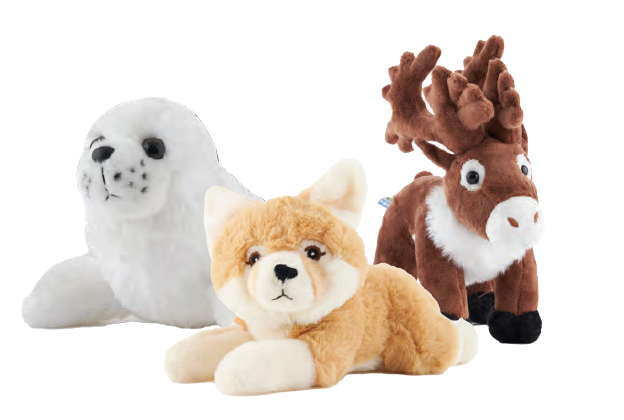In this activity, students talk about habitats and why they’re important for animals. Next, they will meet some young researchers working on conservation projects and brainstorm a way to contribute to these efforts.

Grade level: K-3, 4-6
Learning Objectives:
– Recognize that changes in habitats impact animals
– Relate conservation projects to improved habitat health
In this activity, students will:
– Review different types of habitats and threats to these habitats
– Explain how conservation projects can help animals
– Come up with a plan to support these efforts (optional)
Materials:
Handouts: Our Animal, Our Conservation Hero
As part of Earth Rangers’ mission to create a generation of conservationists, we support research and stewardship projects through our Wildlife Adoptions Program. This is a fun way for children and classes to get involved and learn more about how we can help animals. In this activity, students will meet 3 young researchers and learn more about how their work is helping animals and why it is so important.
Set up:
- Decide how to split the class into groups (pairs, groups of 3, etc.)
- Prepare one “Our Animal” page per group, ensuring equal distribution of the three animals among the groups (Swift Fox, Caribou, and Ringed Seal)
- Prepare one “Our Conservation Hero” worksheet per group
Instructions
- Prior knowledge about habitats. The following prompts can be used to guide the discussion:
- What is a habitat?
- What are some examples? (i.e. forest, grassland, freshwater, and ocean ecosystems)
- What is a food chain?
- As a class brainstorm where you can find the following habitats, what their features are and which animals live in them: Arctic Tundra, Boreal Forest and Prairie Grasslands.
Arctic Tundra:
Where? In Yukon, the Northwest Territories, Nunavut, Northeastern Manitoba, northern Ontario, Northern Quebec and Northern Labrador
What? Permafrost, rocky ground, a very cold climate with long and dark winters.
Who? Polar bears, Arctic hares, Snowy owls, Beluga whales, Seals, Narwhals
For more about the Arctic Tundra
Boreal Forest:
Where? From Yukon and northern British Columbia to Newfoundland and Labrador (map).
What? Forests in environments where freezing temperatures happen for 6 to 8 months.
Who? Woodland Caribou, Grizzly and Black Bears, Wolves, Lynx
For more about the Boreal Forest
Prairie Grasslands:
Where? Saskatchewan, Alberta and Manitoba
What? Grasses, wildflowers, and shrubs with fertile soil. Generally dry with a lot of wind and extreme temperatures.
Who? Bison, Swift Fox, Prairie Dogs, Prairie Rattlesnakes
For more about Prairie Grasslands
- As a class, discuss what would happen if there were changes in the habitats, such as:
- It got really hot
- It got really cold
- There were no more trees or grass
- It started to rain all the time
- Explain that there are researchers who do work to better understand, to help prevent or to solve problems animals are facing. Explain that each group will receive information about a researcher working on one animal and will have to prepare notes about that animal to share with the class.
Swift Fox:
Peter Soroye, Wildlife Conservation Society of Canada
Caribou:
Yifeng Wang, Queen’s University
Ringed Seals:
Katie Florko, University of British Columbia
- After explaining to the class how to fill out the Our Conservation Hero worksheets, split the class into groups. Distribute the Our Animal sheets (one animal per group) and worksheets (one per group), and give the groups time to complete the activity.
Results and Discussion
- As a class, talk about the three different animals and projects.
- Discussion questions to go further:
- What is wildlife conservation?
- What do you think are some of the biggest dangers to wildlife?
- How do you think people can help?
Next step (Optional)
As a class, decide on a way to help support conservation efforts, for example by adopting a Swift Fox, Caribou or Ringed Seal through the Earth Rangers Wildlife Adoption Program. All adoptions result in a direct donation to the researchers’ projects.
Make a fundraising plan such as:
- Toonie donations by class members
- A bake sale
- A bottle drive
- A talent show or an art show with a donation box

Resources
Arctic Tundra Biome (Let’s Talk Science)
8 Facts About Canada’s Boreal Forest (Natural Resources Canada)
Grasslands 101 (Nature Conservancy Canada)
Swift Fox :
Peter Soroye, Wildlife Conservation Society of Canada
Calling All Swifties! Chasing the Swift Fox with Peter Soroye
Caribou:
Yifeng Wang, Queen’s University
CariBOU-YAH! An Adventure in the Permafrost Peatlands with Yifeng Wang
Ringed Seals:
Katie Florko, University of British Columbia
Signed, SEALED, and Delivered! A Thrilling Trip to the Ringed Seal’s Arctic Habitat with Scientist Katie Florko
